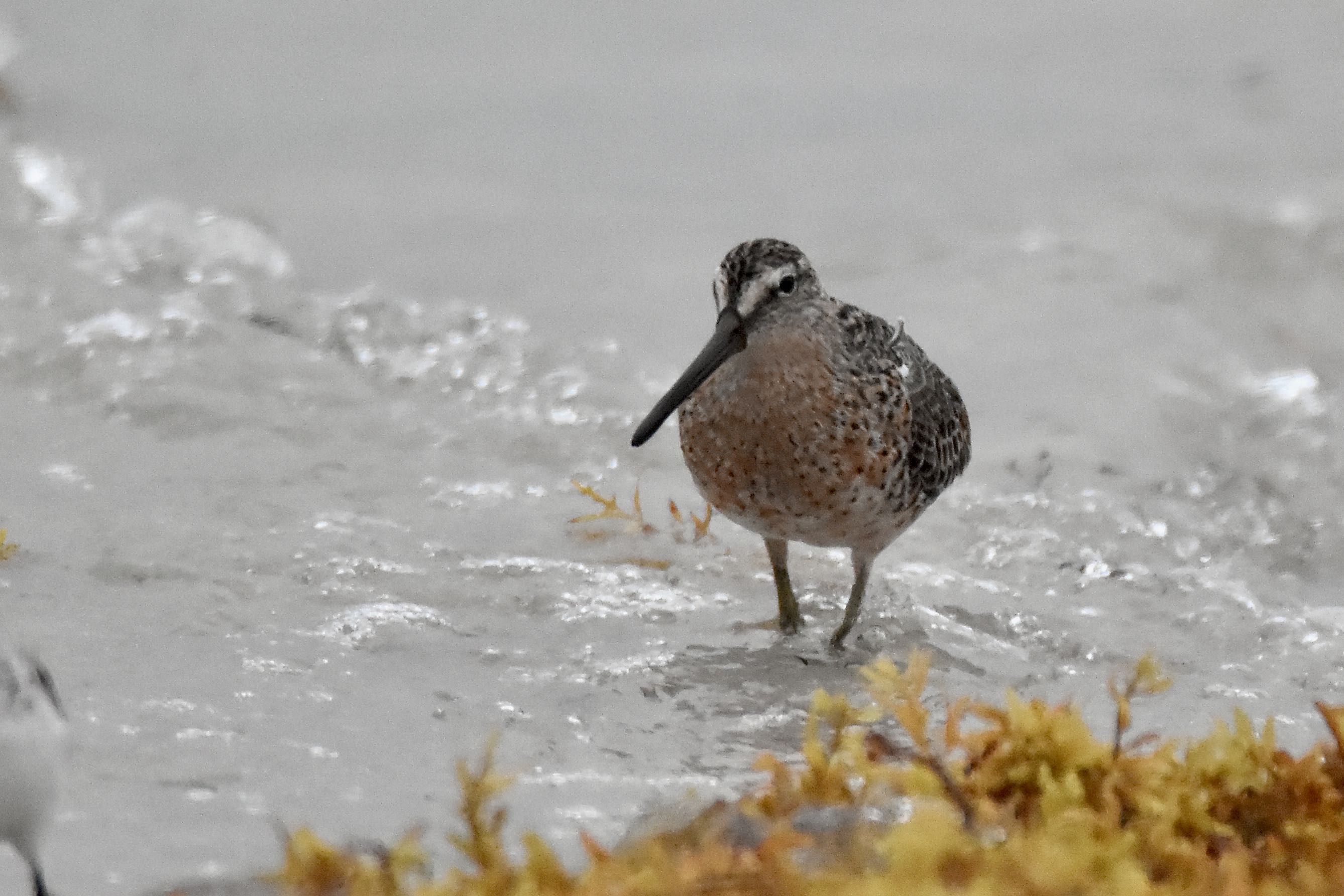
Short-billed dowitcher, photographed at Curry Hammock State Park, Monroe County, in April 2017.
There are ways to tell the short-billed dowitcher, Limnodromus griseus, from its cousin, the long-billed dowitcher. Limnodromus scolopaceus. Surprisingly, despite the names, the length of the bill isn’t one of them.
Short-billed dowitchers can have a longer bill than a long-billed dowitcher. Or their bills can be shorter.
And the looks of the birds are so similar otherwise that you’d be hard-pressed to tell the two apart if they were standing next to each other. In fact, it wasn’t until 1950, after decades of detailed research and observation, that ornithologists declared the two to be separate species.
One relatively easy tell that separates the two: their calls are different. A second: habitat. Long-billed dowitchers are more likely to be found inland along freshwater bodies in the winter months, while short-billed are going to be found along the coast and salt water. Short-billed dowitchers will pit stop at freshwater lakes and ponds during migration, however.
The birds on this page were spotted foraging along a coastal mudflat in the Keys, leading us to conclude that they are of the short-billed variety. There’s also an ever-so-slight downward curve to the bill seen on some of the photos, another clue that this is a short-billed.
And while the length of the bill isn’t a reliable way to separate the two species, it will distinguish both species from other shorebirds. The only birds to rival them are the whimbrel and curlew, both of which have bills that are substantially curved. Both dowitchers are medium-sized as far as shorebirds go, a mix of oranges and browns during breeding season, dull browns in winter.
Short-billed dowitchers are winter residents of Florida, spending the short summer nesting season in northern Canada and southern Alaska. (Another distinction between the two birds: Long-billed dowitchers summer farther north and west into Alaska and even Siberia.) Come fall, they’ll retreat to the Atlantic and Gulf coasts from New Jersey to Texas, Mexico, Central America, South America and the Caribbean. In migration, they can be spotted pretty much anywhere east of the Rockies. There’s also a population that winters along the Pacific Coast from California south.
In summer, short-billed dowitchers nest in bogs and marshes along the edges of lakes. In winter, they take to tidal flats of estuaries and bays, salt marshes and lagoons where they can forage in the shallows.
Their nest is a shallow depression in grass or moss and lined with twigs, leaves and grass. Clutches are typically four eggs, which require three weeks of incubation; both parents share sitting duties. The young leave the nest shortly after hatching, and are able to feed themselves. Mom reportedly bolts early for the migration south, leaving dad to tend to the offspring. Age of first flight isn’t known.
During nesting season, short-billed dowitchers eat mostly insects and insect larvae; in winter and during migration, they’ll eat snails and clams, marine worms and crustaceans. They’ll forage while wading in shallow water or along a mud flat, probing deeply and rapidly — Cornell describes it as sewing-machine-like — with their bills. During the spring migration northward, they’ll stop at Delaware Bay to feed on horseshoe crab eggs.
Short-billed dowitcher numbers have been declining for decades, and several organizations list the species as “threatened.” Loss of habitat because of climate change and development are major problems.
More on long-billed dowitcher here and here.
Short-billed dowitchers are members of Scolopacidae, the sandpiper family.
Curry Hammock State Park



